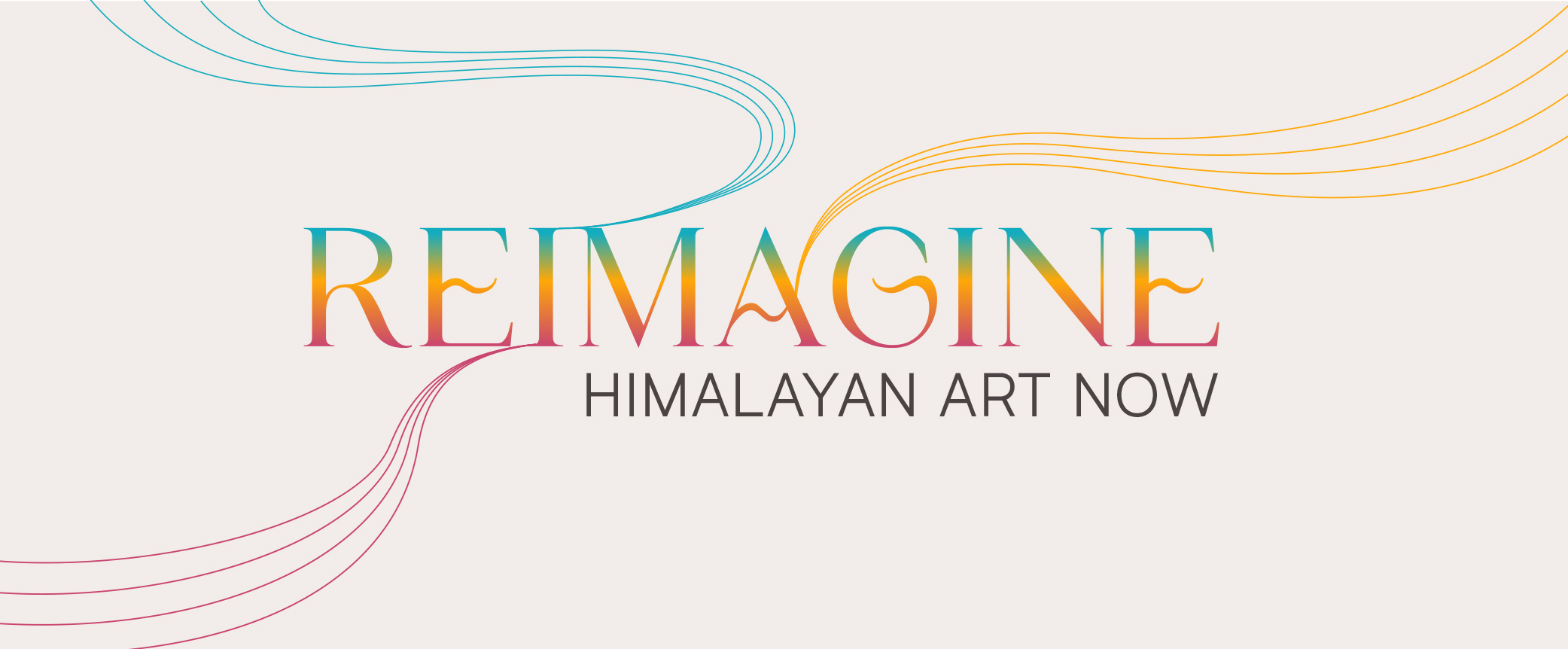
Pema (“Tintin”) Tshering
Reimagine: Himalayan Art Now
March 15–October 6, 2024
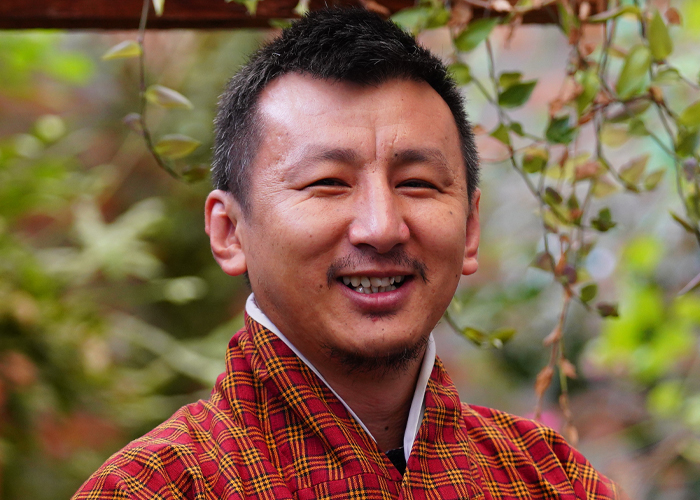
LISTEN TO THE ARTIST
ABOUT THE ARTIST
Pema (“Tintin”) Tshering (he/him)
b. 1985, Thimphu, Bhutan; lives and works in Thimphu, Bhutan
Pema “Tintin” Tshering reframes Buddhist and Bhutanese concepts, freeing them from their expected, familiar contexts. His work examines abstract, intangible Buddhist philosophies and how they manifest in everyday life through symbols, personalities, practices, and the human landscape of faith and belief.
His artworks have been exhibited in both solo and group exhibitions, such as Wishful Refraction (2020) in Tansbao Gallery, Taiwan, and Voice of the Thunder Dragon (2017) at 263 Bowery NYC. Pema “Tintin” Tshering is one of the founding members of Voluntary Artist Studio Thimphu (VAST) in Thimphu, Bhutan, where he continues to contribute as an educator and mentor and is on the executive board. VAST was established as the first and only contemporary art organization which philanthropically offers informal educational programs for young people and adults.
pematshering.com / @tintin_in_bhutan
ABOUT THE ARTWORKS IN REIMAGINE
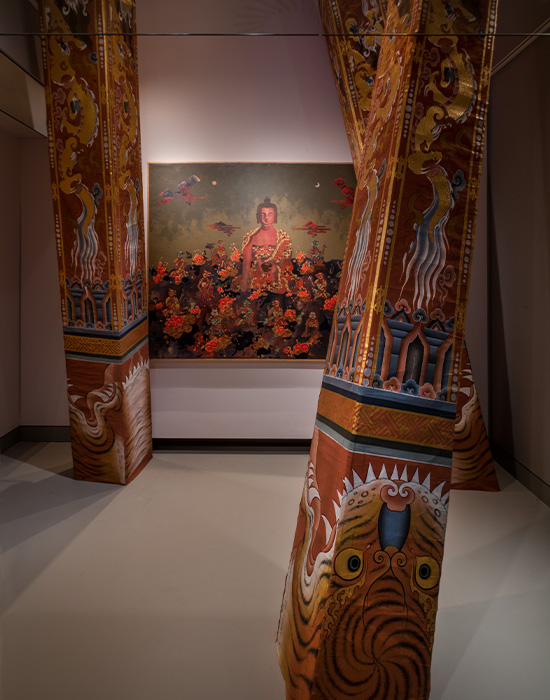
This piece is influenced by the Buddhist notion of enlightenment, a state that seems unattainable since there is no singular path and the experience of it is in a way subjective. Tintin believes that the Gross National Happiness, which the Bhutanese government has popularized, reflects a tendency “to homogenize happiness.” Happiness is subjective, ambiguous, and fluid, and it means different things to different people, hence the title Objective Happiness. To visualize the irony of standardizing something like happiness, Tintin reimagines the monastic space with angled “pillars” connecting the ceiling and ground, since the path is not a straight one.
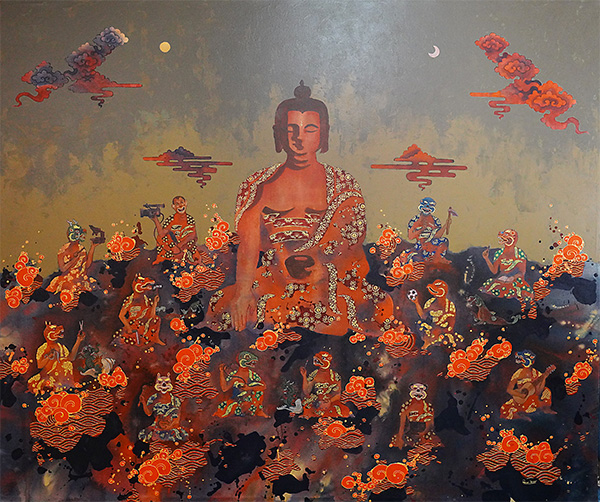
The Buddhist mahasiddhas, or “fully perfected ones,” embody the enlightenment ideal of Tantric or Vajrayana Buddhism, as they have obtained enlightenment through unconventional Buddhist practice. Their Buddhist path is rooted in their field of craft, passion, or discipline. This piece is inspired by the lives of the eighty-four mahasiddhas as transcendent and supernatural. Pema “Tintin” Tshering tries to visualize the modern practices of disciplines of passion as a spiritual journey to understand the deep-rooted Buddha within. Guru Rinpoche, also known as Padmasambhava or Lotus Born, was born enlightened and is an important mahasiddha. The artist notes the significance of Guru Rinpoche to his Buddhist practice, saying, “To have this piece from the Rubin paired with my work is a big inspiration, as Guru Rinpoche is part of me and my path.”
RELATED RUBIN OBJECT
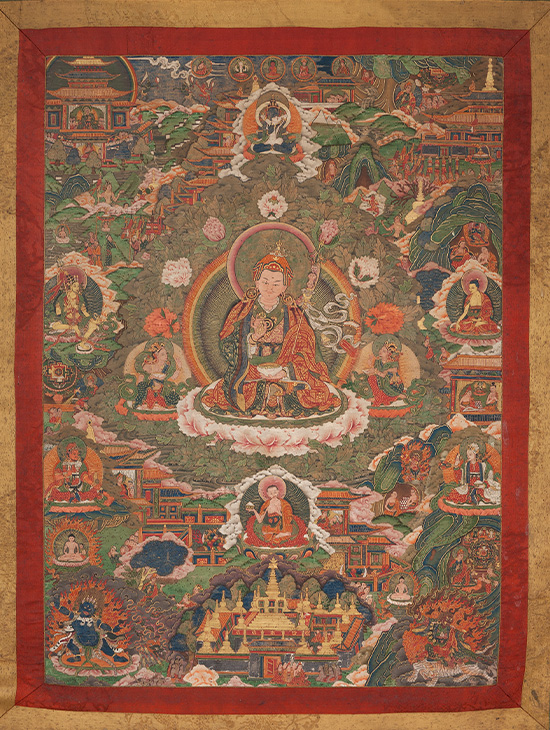
This object from the Rubin Museum’s collection is presented in the Reimagine exhibition in dialogue with Objective Happiness and Buddha with the passions surrounding, inviting new ways of encountering traditional Himalayan art.

